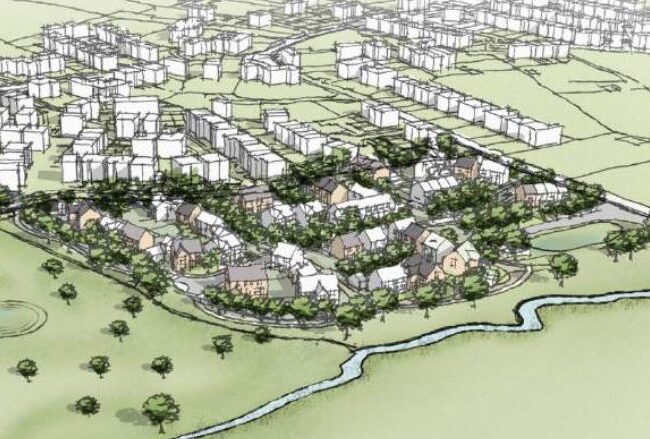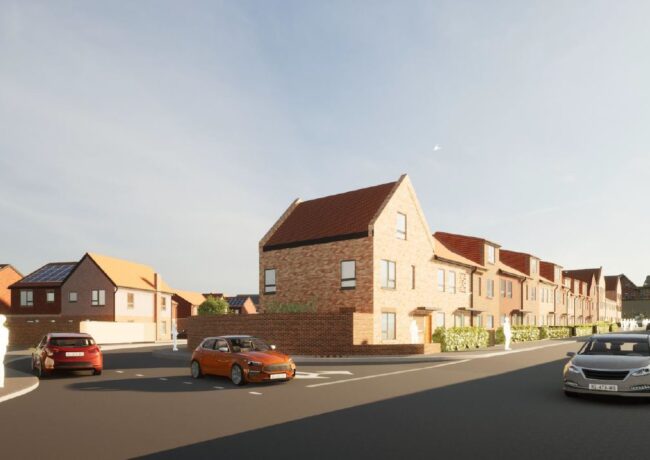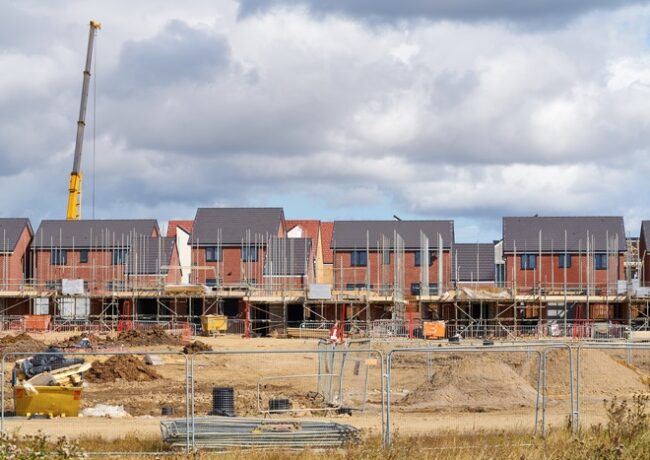Inspector backs Cheshire East over planning refusal
An independent planning inspector has upheld Cheshire East’s decision to reject plans by Gladman Developments for a housing scheme in Wrenbury, finding the council had identified enough deliverable sites to provide a five-year housing supply.
Gladman’s proposals were for 46 homes along with public open space at a plot off New Road in Wrenbury. These were put forward in December 2016, but were rejected by Cheshire East’s planning committee on 8 March 2017.
The council refused this application on the basis of its impact on the open countryside, flood risk, and insufficient information to assess the quality of the existing agricultural land on the site, which covers 6.5 acres.
Gladman’s site also borders two recent housing developments, St Margaret’s Close and Marbury Meadows.
A further application was made by Gladman, reducing the number of homes from 46 to 41, and although the Council agreed the amended scheme addressed flood risk concerns and that it would not object to the loss of agricultural land, this was again refused by the council on 9 August last year.
Gladman had pledged to make a financial contribution to secondary education, and have a provision of 30% affordable homes at the site, if plans were granted.
However, planning inspector AJ Mageean found the proposals from Gladman were in conflict with the council’s local plan in regards to open countryside, given the site sits outside the village’s boundaries, and agreed that Cheshire East had sufficient land supply for housing to reject the proposals.
On the number of homes required in the borough, the Local Plan outlines the need to deliver 1,800 homes per year, with an overall housing requirement of 36,000 over the plan period, which covers 2010 to 2030.
The council also said it could demonstrate a supply of deliverable housing sites to provide 15,908 houses in the current five-year period, which covers 2017 to 2022.
However, Gladman had argued the council could only deliver 13,807 homes, with differences between the two figures based on “different approaches to the concept deliverability” alongside the varying application of lead-in times and build rates on specific sites.
The rejections based on the site’s status as open countryside, and based on its appearance, were also upheld by the inspector, who found the proposal to be against planning policy on both issues.
One of the Cheshire East Local Plan’s key objectives is to protect open countryside from urbanising development.
While the inspector found that in previous years the council had not been able to demonstrate a five-year supply of housing land, Cheshire East has now outlined it has a supply of land which will cover more than five years.
The inspector’s report said: “Whilst I have concluded that at the present time the supply of housing land is not quite as healthy as the Council believes, there is a supply which exceeds the five year requirement. When considered along with recent facts relating to both the supply of land and delivery of housing units, I see no reason to depart from the conclusions of the local plan Inspector in finding that there is sufficient provision to ensure that local housing needs can be met.”
Finding the development to be in conflict with Cheshire East’s policies PG6 and RES.5, the inspector said: “Whilst it is apparent that settlement boundaries have not kept pace with recent change, and that they will be subject to further change to reflect the future needs of these settlements, they nonetheless remain the starting point for decision making.”
The inspector also said the site’s appearance would “represent a piecemeal intrusion into the rural landscape to the south west of the village and would have an unbalancing effect on its form overall”.
Concluding the report, Mageean said: “I recognise that there would be some economic and social benefits arising from the provision of additional housing in an accessible location, including 30% affordable housing. Open space would be provided, and a new footway along New Road would improve pedestrian access to the site.
“I also recognise that the support to local services and businesses would provide both short and longer term economic benefits. Overall I attach moderate weight to these benefits.
“However, whilst these benefits are material considerations, even when taken together they are of insufficient weight to overcome the conflict with the development plan taken as a whole. The appeal is therefore dismissed.”





Who did the TA? I find that all approvals of dodgy sites come down to a TA, and equally their rejection hinges on a bad TA.
TAs.
By TA
Good.
By Alan
TA- What makes you say that? In this case transport is not mentioned at all as being a factor in the reason for refusal.
By Transport Planner
The amount of hot air that comes from certain transport consultants when sites get approved
By TA